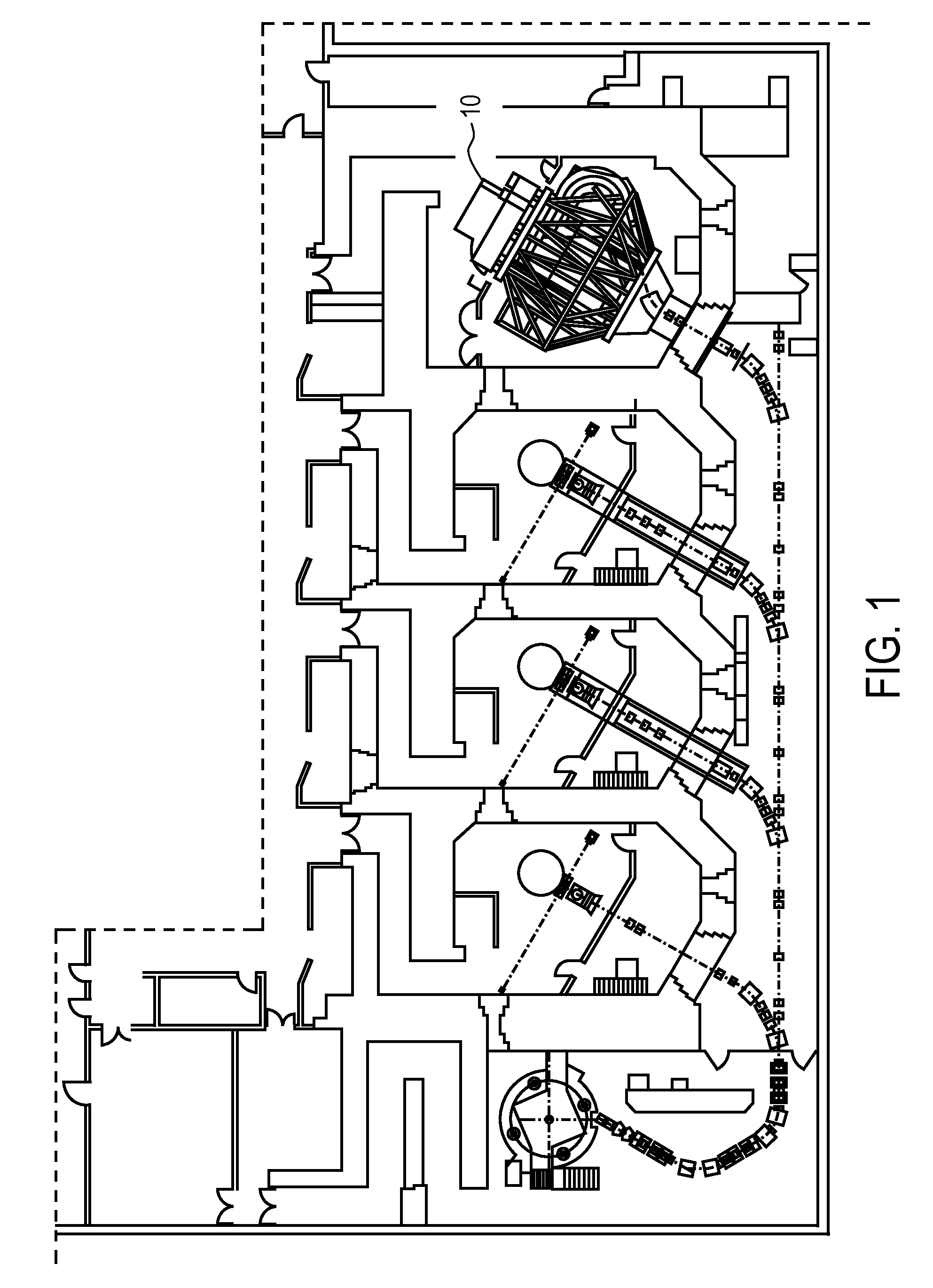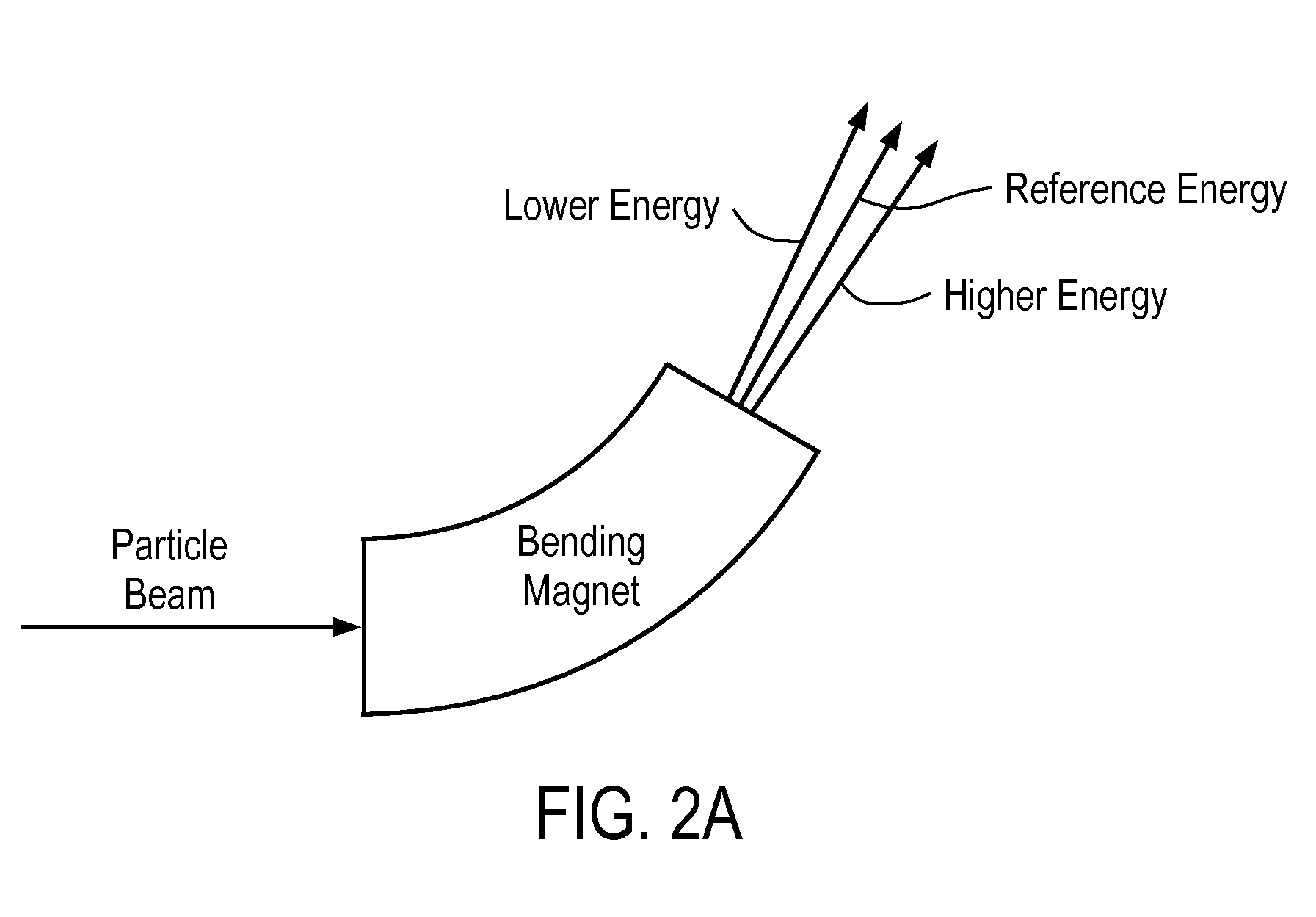Compact isocentric gantry
a compact isocentric, gantry technology, applied in the field of proton therapy, can solve the problems of acute short-term complications, short-term and later-stage tumors in long-term cancer survivors, and normal tissue, and achieve the effect of facilitating beam scanning
- Summary
- Abstract
- Description
- Claims
- Application Information
AI Technical Summary
Benefits of technology
Problems solved by technology
Method used
Image
Examples
Embodiment Construction
[0044]Through use of the superconducting magnet technology for beam delivery systems, it is proposed to reduce the capital cost of proton systems to be competitive with that of advanced x-ray systems on a per treatment fraction use basis. The compact isocentric gantry design for particle therapy presented herein is based upon innovative superconducting magnet systems.
[0045]Isocentric gantry systems described herein can include a number of superconducting magnets to reduce the overall size and swept volume of the gantry assembly. The coil windings of a superconducting magnet are typically made of wires or tapes of superconducting material. During operation, the magnet coils must be cooled below their critical temperature; the temperature at which the superconducting material changes from the normal resistive state and becomes a superconductor. Cryocoolers can be used to reach the temperature of about 5 degrees Kelvin required for most common superconducting material. There are two op...
PUM
 Login to View More
Login to View More Abstract
Description
Claims
Application Information
 Login to View More
Login to View More - R&D
- Intellectual Property
- Life Sciences
- Materials
- Tech Scout
- Unparalleled Data Quality
- Higher Quality Content
- 60% Fewer Hallucinations
Browse by: Latest US Patents, China's latest patents, Technical Efficacy Thesaurus, Application Domain, Technology Topic, Popular Technical Reports.
© 2025 PatSnap. All rights reserved.Legal|Privacy policy|Modern Slavery Act Transparency Statement|Sitemap|About US| Contact US: help@patsnap.com



